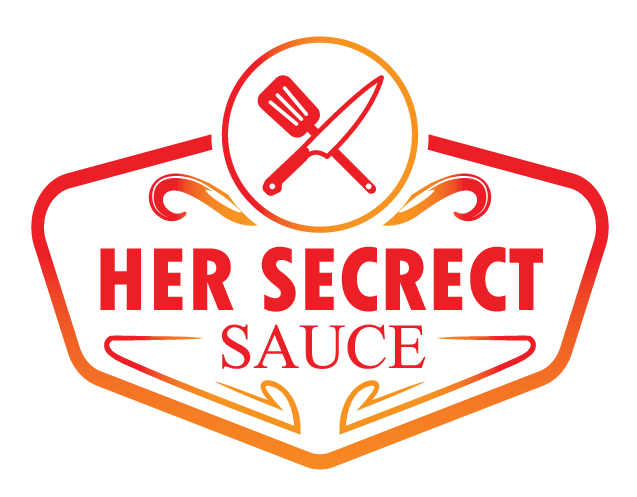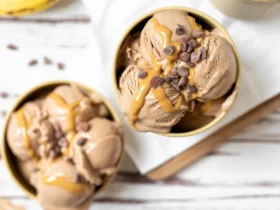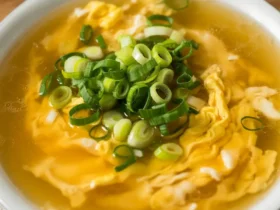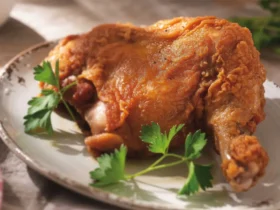I think we can all agree, there’s good fried chicken, and then there’s great fried chicken. You know the kind I’m talking about. The skin is so crispy it crackles when you look at it, and the inside is so juicy it’s a miracle. For years, I thought that kind of chicken was only available at some secret spot down a country road.
But I’m going to show you how to make that exact chicken right in your own kitchen. No special equipment, no secret handshakes. Just a few key steps that make all the difference between “pretty good” and “unbelievably amazing.” This is the recipe that will make you a legend.
You’re about to learn how to get that perfect crispy crust that sticks to the chicken, every single time. And the meat will be so tender and flavorful, you’ll wonder why you ever made it any other way.
Why This Fried Chicken Recipe Just Works
Look, there are a million fried chicken recipes out there. Some are so complicated they make your head spin. Others are so simple they leave you with greasy, sad chicken. This recipe is the perfect middle ground.
It’s all about the technique. We’re going to use a simple buttermilk brine to make the chicken super juicy. Then, we’ll use a special dredging method that creates a thick, craggy crust that’s born to be crispy. It’s not hard, I promise. It just takes a little patience.
The biggest secret isn’t an ingredient. It’s about controlling the temperature of your oil. Get that right, and you’re ninety percent of the way to chicken heaven. We’ll walk through that part step-by-step so you can’t mess it up.
What You’ll Need
Getting your ingredients ready ahead of time is half the battle. It makes the whole cooking process feel way less frantic. Here’s what you need to grab from the store. Don’t skimp on the spices—they make a huge difference.
For the Chicken and Brine
The brine is where all the magic starts. It’s a non-negotiable step for juicy chicken. Let it sit for at least 4 hours, but honestly, overnight is even better if you have the time.
| Ingredient | Amount |
|---|---|
| Whole Chicken (cut up) | 3-4 lbs |
| Buttermilk | 2 cups |
| Hot Sauce (like Frank’s) | 2 tbsp |
| Salt | 1 tbsp |
| Black Pepper | 1 tsp |
For the Crispy Coating (Dredge)
This is what creates that amazing crust. The cornstarch is a key player here; it helps make the coating extra crispy and golden brown. Make sure you mix everything together really, really well.
| Ingredient | Amount |
|---|---|
| All-Purpose Flour | 2½ cups |
| Cornstarch | ½ cup |
| Smoked Paprika | 2 tbsp |
| Garlic Powder | 2 tbsp |
| Onion Powder | 1 tbsp |
| Cayenne Pepper | 1 tsp |
| Salt | 1 tbsp |
| Black Pepper | 2 tsp |
For Frying
The type of oil you use matters. You want something with a high smoke point that won’t burn. Peanut or canola oil are my top choices because they have a neutral flavor.
| Ingredient | Amount |
|---|---|
| Frying Oil | 48 oz (about 6 cups) |
The Tools for the Job
You don’t need a professional kitchen, but a few specific tools will make your life a whole lot easier. A good thermometer is the most important thing on this list. Guessing the oil temperature is how you end up with burnt-on-the-outside, raw-on-the-inside chicken.
- Large Cast-Iron Skillet: A 12-inch one is perfect. It holds heat really well, which is key.
- Deep-Fry Thermometer: The kind that clips to the side of the pan is best.
- Tongs: For safely flipping the chicken.
- Wire Rack: For letting the chicken rest and drain after frying.
- Shallow Dishes or Pie Plates: You’ll need two for the dredging station.
- Large Bowl: For brining the chicken.
Pro Tips for First-Timers
I’ve made every mistake in the book so you don’t have to. Here are the three most important things to remember if you want to nail this on your first try.
Tip 1: Don’t Skip the Brine
Seriously. Soaking the chicken in buttermilk, salt, and hot sauce does two things. First, the salt and acid in the buttermilk work together to tenderize the meat, making it super juicy. Second, it helps the flour coating stick to the chicken like glue. Rushing this step is a recipe for dry chicken and a crust that falls off.
Tip 2: Your Oil Temperature is Everything
If the oil is too hot, the crust will burn before the inside is cooked. If it’s too cool, the chicken will soak up a ton of oil and turn out greasy and soggy. The magic number is 325°F. Your thermometer is your best friend here. Watch it constantly and adjust your stove’s heat to keep it steady.
Tip 3: Give The Chicken Space
I know it’s tempting to load up the skillet to get it done faster, but don’t. Overcrowding the pan drops the oil temperature way too fast, which leads to greasy chicken. It also steams the chicken instead of frying it, so you lose that crispy crust. Cook in batches, leaving about an inch of space between each piece.
Let’s Make Some Perfect Fried Chicken
Alright, let’s get down to business. Follow these steps exactly, and you’ll be in great shape. Read through them once before you start so you know what’s coming.
Step 1: In a large bowl, mix together the buttermilk, hot sauce, salt, and pepper. Add your chicken pieces, making sure they are all fully covered. Cover the bowl with plastic wrap and put it in the fridge for at least 4 hours, or up to 24 hours.
Step 2: When you’re ready to cook, set up your dredging station. In one shallow dish, mix the flour, cornstarch, and all the spices for the coating. Pour about a cup of your buttermilk brine into a second shallow dish.
Step 3: Take a piece of chicken out of the brine, letting the excess drip off. Dip it into the flour mixture and toss to coat it completely. Then, dip it into the bowl of reserved buttermilk brine, and then put it back into the flour for a second coating. (This double-dip is the secret to a thick, shaggy crust).
Step 4: Press the flour onto the chicken firmly to make sure it sticks. Place the coated chicken on a wire rack and let it sit for about 15-20 minutes. This little rest helps the coating dry out a bit and stick even better during frying. Repeat with all the chicken pieces.
Step 5: While the chicken is resting, pour your oil into the cast-iron skillet. It should be about an inch deep. Attach your thermometer to the side and heat the oil over medium-high heat until it reaches 325°F. This can take about 10 minutes.
Step 6: Carefully place a few pieces of chicken into the hot oil, skin-side down. Don’t crowd the pan! The oil temperature will drop a bit, so adjust the stove heat to keep it around 300-325°F.
Step 7: Fry the chicken for about 6-8 minutes on the first side, until it’s a deep golden brown. Don’t mess with it too much; just let it cook.
Step 8: Using tongs, carefully flip the chicken pieces. Cook for another 6-8 minutes on the other side. The chicken is done when the internal temperature reaches 165°F and the crust is dark golden brown. (Dark meat like thighs might take a little longer).
Step 9: Remove the chicken from the skillet and place it on a clean wire rack to drain. Sprinkle it with a tiny bit of salt while it’s still hot. Let it rest for at least 10 minutes before serving. This part is hard, but it lets the juices redistribute so they don’t all run out on the first bite.
Substitutions and Fun Variations
Once you get the basic recipe down, you can start playing around with it. This recipe is a great starting point.
Spice It Up or Tone It Down
- For extra heat: Double the cayenne pepper in the flour mixture, or add a teaspoon of chipotle powder for a smoky kick.
- For a different flavor: Try adding a tablespoon of Old Bay seasoning to the flour for a more savory, coastal vibe. A little dried thyme or sage also works really well.
What if I Don’t Have Buttermilk?
No buttermilk? No problem. You can make your own substitute. Just add one tablespoon of either lemon juice or white vinegar to one cup of regular milk. Let it sit for about 5-10 minutes. It will curdle a bit, and that’s exactly what you want. It works just as well for the brine.
Storing and Reheating Leftovers
Fried chicken is one of those things that’s amazing the next day, but only if you reheat it the right way.
To store it, let the chicken cool down completely. Then, place it in an airtight container in the fridge for up to 3 days. Don’t wrap it in plastic wrap, as that can trap moisture and make the skin soggy.
The absolute best way to reheat it is in the oven or an air fryer. Preheat your oven to 400°F. Place the chicken on a wire rack set on a baking sheet and bake for about 15-20 minutes. This crisps the skin back up beautifully without overcooking the meat. The microwave will just make it soggy, so please don’t do that.
What to Serve With Your Chicken
You’ve made this incredible main course, so what do you put next to it? You can’t go wrong with the classics.
- Mashed Potatoes and Gravy: It’s the ultimate comfort food pairing for a reason.
- Coleslaw: A creamy, tangy coleslaw cuts through the richness of the fried chicken perfectly.
- Cornbread: A slightly sweet, crumbly cornbread is great for sopping up any extra juices.
- Collard Greens: Slowly simmered with a little bit of bacon or a smoked turkey leg, this is a classic Southern side that just works.
Frequently Asked Questions
Here are some questions I get all the time. Hopefully, these help you out.
Q1. Why did my chicken crust fall off?
Ans: This usually happens for two reasons: you skipped the 15-minute rest after dredging, or the chicken was too wet going into the flour. Letting it rest helps the coating “set” and stick to the chicken during frying.
Q2. My chicken is dark on the outside but raw inside. What happened?
Ans: Your oil was too hot. The outside cooked way too fast before the heat could get to the center of the chicken. A thermometer is the only way to prevent this for sure.
Q3. Can I use boneless, skinless chicken breasts?
Ans: You can, but they will cook much faster, maybe 5-6 minutes per side. They also tend to dry out more easily, so the buttermilk brine is extra important for them.
Q4. Can I make this in an air fryer?
Ans: This recipe is really designed for deep frying in oil to get that classic crust. While you can air fry breaded chicken, you won’t get the same thick, craggy, super-crispy result as you do with this method.
Wrapping Up
There you have it. This isn’t just a recipe; it’s a method for making some of the best fried chicken you’ve ever had. It might seem like a lot of steps, but once you do it, you’ll see how simple it really is. It’s all about taking your time and paying attention to the details.
The first time you pull a piece of that perfectly golden, crispy chicken out of the skillet, you’re going to feel like a rockstar. And when you take that first bite, you’ll know it was all worth it.
So give it a try. I’d love to hear how it turns out for you. Leave a comment below and tell me about your fried chicken victory, or ask any questions you have along the way. Happy cooking






Leave a Reply